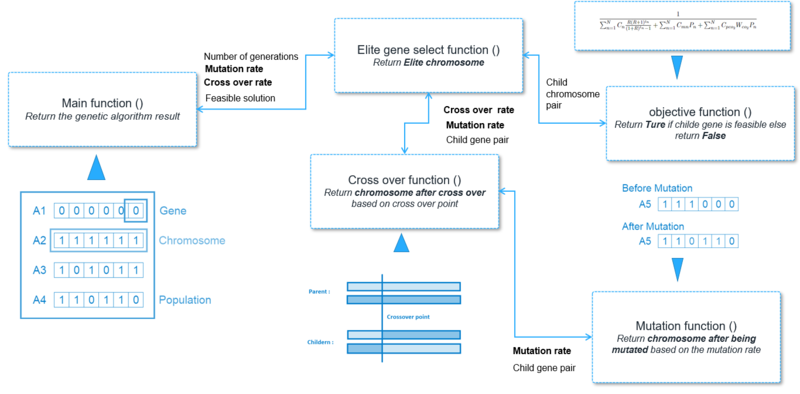Microgrid optimisation - Genetic algorithm implementation
Project information
- Category: Machine Learning : Genetic Algorithm
- Client: University of Kelaniya
- Project URL: project link
With a special emphasis on the effects of crossover and mutation rates, this study applies genetic algorithms to optimize the costs of microgrids. As a way to incorporate renewable energy sources into isolated and underserved locations, microgrids are becoming more and more popular. They may lose some of their benefits over conventional power generation systems if not configured properly.
The goal of this study is to pinpoint the ideal operational conditions for using genetic algorithms to optimise microgrid costs. The study focuses on the Sri Lankan energy market with the goal of promoting decentralized Microgrid technologies and boosting the dependability of the energy service sector. The method uses a genetic algorithm written in Python and runs through 100 generations to find the best operating settings. The operational expenses of each unit, the cost of carbon dioxide emissions, and the present value of future running costs are all taken into account in the cost optimization equation for the microgrid.
To determine how crossover and mutation rates affect fitness, several experiments were run. For statistical analysis, the Kruskal-Wallis H-test was utilized, and a Dunn post hoc test was used to find significant pairwise differences in mutation rates. The results show that the performance of the genetic algorithm for Microgrid cost optimization is not significantly affected by crossover rates. However, convergence and algorithm speed may be impacted by abnormally low or high crossover rates.
On the other hand, fitness is significantly impacted by mutation rates, with higher mutation rates typically producing better outcomes. However, due to potential anomalies in algorithm output, extreme mutation rates should be used with caution. The ideal mutation rate range, which balances genetic diversity and convergence, was discovered to be between 1% and 10%. In summary, this study offers insightful information about the use of genetic algorithms for Microgrid cost optimization. Performance is not much impacted by crossover rates, however attaining the best results depends on mutation rates. The 1% to 10% recommended mutation rate range provides algorithm convergence and consistent outcomes. These discoveries will help professionals in the energy sector who are working to promote and deploy Microgrid systems in Sri Lanka and other areas, giving them the ability to construct power generation strategies efficiently and make the most of renewable energy sources.

